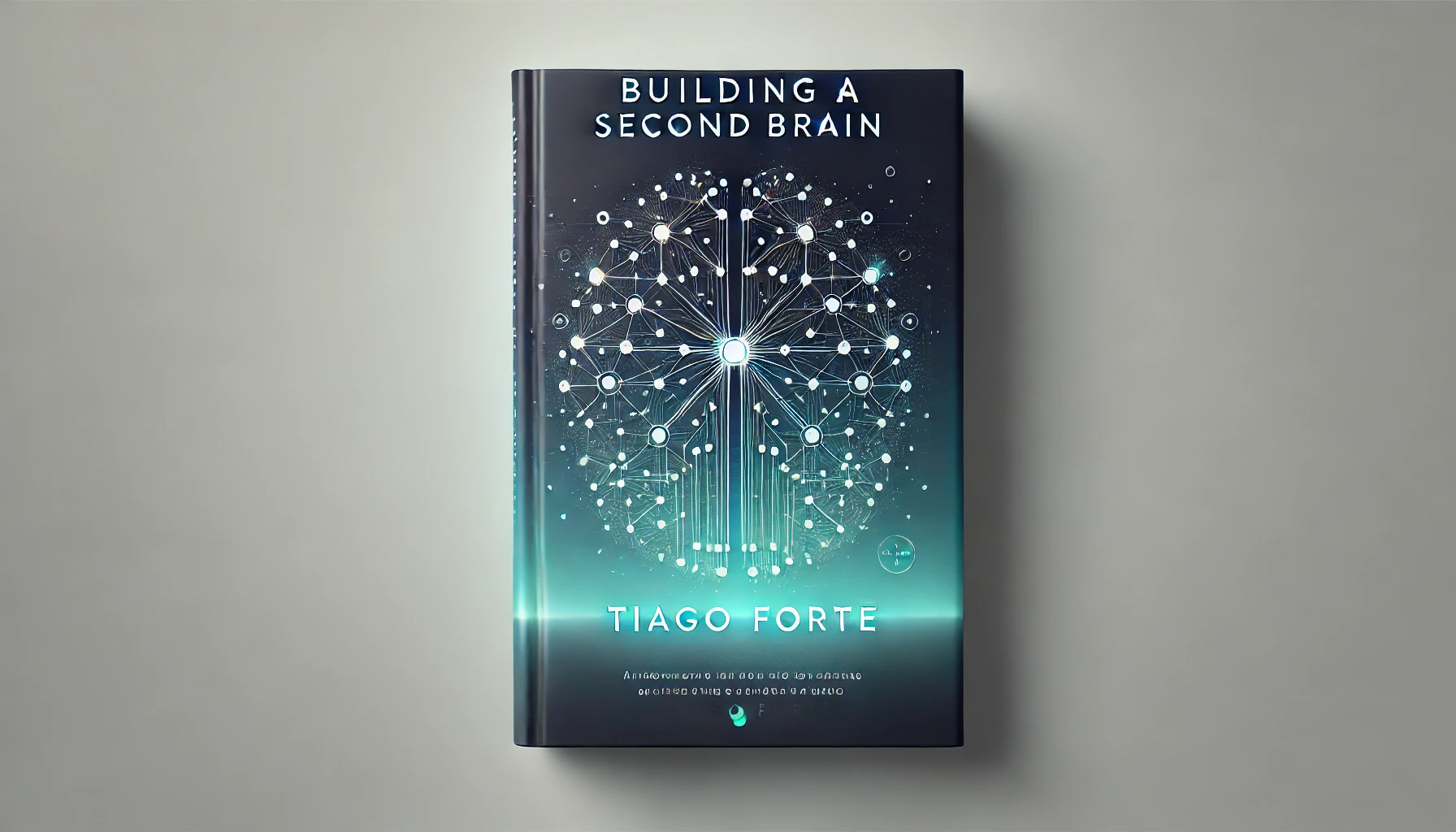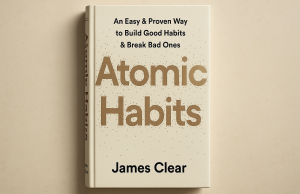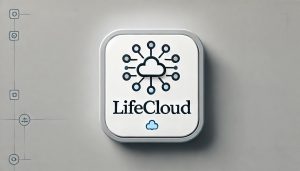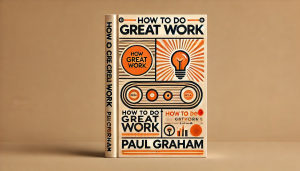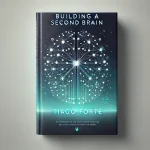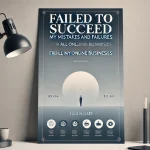I’ve spent countless time reading books in the last 2 years of my life. Despite the relatively short period for a habit as time-consuming as reading, I managed to read numerous books during that time. Atomic Habits, Rich Dad Poor Dad, Think and Grow Rich, How to Win Friends and Influence People, Dotcom Secrets, The Richest Man in Babylon, 24 Assets, and 100$ Million Offers were just some of them. Nevertheless, the majority of the information I’ve acquired from these books got lost in my thoughts, which is why I can’t really apply the things I learned from them in the current period of my life, nor in the future. However the last book that I read—which I regret not knowing and reading as my first ever book—shall prevent this issue for the future but not just for books—also podcasts, videos, and anything else that I got a sort of value from, and could use that value in my own life. The book that teaches you to build, manage, and use a personal digital assistant for your knowledge: Building A Second Brain
Before getting into the detailed book review I want to indicate that if that book didn’t exist or I wouldn’t read it, I never would come to the idea of creating a personal blog where I share my ideas, learnings, and experiences but also write book reviews where I sum up the most important points and main essence of a book, so first, I once again refresh my learnings and write them down and that way make them immortal—second, give the reader of this blog post an idea about the book itself and transfer the main points as rapid as possible. Thus, this book changed the whole game of knowledge management and being systematic for me. Before even getting into the details, I already strongly recommend you to grab one and read it as quickly as possible—ideally before every other book.
The Main Essence
Even though I have a whole folder of notes for this book, the main essence is a Nintendo-quit-screen-quote that you see as you try to quit a game: “Everything not saved, will be lost.” which underlines the value of note-taking. Nevertheless, it has many other teachings than saying “note everything down”; we already know it but barely do it. So Tiago Forte clearly explains the “why” and the “how”. As I thought to myself that I got the most important idea and the main message of the book and wanted to quit but kept reading for 5-10 pages, I got something new and was glad I didn’t quit. So there is definitely much more about managing our knowledge and note-taking than we think there is.
Why need a Second Brain?
First of all, the author makes at the very beginning clear that one of the first and most sensational inventions of humankind—Writing—is without a doubt needed to ideally manage one’s knowledge and be systematic and organized, so one eventually ends up spending less time accumulating information/ data and improve themselves faster, easier and better. The quote at the beginning of the related chapter expresses it very well: “Your mind is for having ideas not holding them.” —David Allen.
Just like a lawyer who doesn’t deal with any crap or kindly expressed—low leverage work—compared to his skills, potential, and capability—like booking appointments, answering calls, or scheduling meetings but lets it do the secretary and truly focuses on his expertise, you also have to let the extra work from your brain go and let it do its own thing, its high leverage work—which is Thinking, Ideating, Creating, Solving, Innovating, Improving—while hiring a secretary to get that crapy work done—which is to store, manage and recall information whenever needed, that also has to be done. Let’s have a look at how that secretary should be, the so-called Second Brain
Therefore, we shall indicate first: absolutely digital. We live in a world of technology that brings many benefits, just like disadvantages. But the idea of being able to carry all your notes in your pocket and so reach them wherever and whenever you want is simply exciting, innovative, and, for those who take advantage of it, is sure game-changing. Moreover, since it is digital, one can search, rearrange, annotate, and share their notes, and so build an unlimited archive.
As someone who really was into analog note-taking and carried bullet journals everywhere for a while, I can tell that it really makes a difference, especially if synced to the Cloud. The Second Brain is—in the book—associated with a commonplace book, which is basically a notebook that was carried by authors, politicians, scientists, and poets everywhere for new ideas, thoughts, and notes back then. So you always have to be prepared to note something down that you aren’t expecting.
The four essential capabilities of the second Brain are indeed—according to the book—first, Making Our Ideas Concrete: this means we can visualize and track what we know and what we don’t and so can take the necessary action upon that. Second, Revealing New Associations Between Ideas: “Creativity is about connecting ideas […]” and since all your ideas are written down and are visually there, you can connect and create new concepts. Third, Incubating Our Ideas Over Time: some ideas need time to mature and are useful after a certain amount of time, as you note your ideas into your Second Brain, you allow them to mature without getting lost or forgotten. And fourth, Sharpening Our Unique Perspectives: after a period of systematic note-taking you start to build up your own unique knowledge with unique perspectives.
The Process of Channeling the Information through: CODE
After a phase of persuasion and clarifying the Why, the author then dives into the more interesting part: the How. He first breaks down the so-called CODE method and defines it with this phrase “CODE is a map for navigating the endless streams of information we are now faced with everyday.” In other words: CODE is the pipeline, the process through which you ideally channel the information you have gathered. Each letter stands for something: Capture, Organize, Distill, and Express.
First, you gather the information that you want to note in your Second Brain, you capture it. Then you find the right/ matching folder/ place for that information and move it there, so you organize your gathered information. After organizing, you distill the main essence of that information/ note, just like I did at the very beginning of this post: remember the Nintendo-Quit-Screen quote? The author states “Every idea has an ‘essence’; it might take hundreds of pages and thousands of words to fully explain a complex insight but there is always a way to convey the core message in just a sentence or two.” And finally, you make all the previous steps count and: express!: “All the previous steps—capturing, organizing, and distilling—are geared towards one ultimate purpose: sharing your own ideas, your own story, and your own knowledge with others.”
So first, you have to capture, and “capture what resonates”. So it dives into how the process of capturing should be and breaks it into four criteria: something inspiring, useful, personal (like ideas, memories, or reflections), and surprising. But in order to organize this captured information properly you must have a systematic order, so you can tell each time where a new information belongs and where you find the note you are looking for.
Organizing for Action: PARA
At this point—to me—the most valuable lesson from this book, which I have also applied to my note-taking system and which is why I am capable of writing this book review right now, comes to the daylight: The PARA Method. So, this method represents the idea of “organizing for action”.
Fine, but what does it actually mean? First, here is a quote that perfectly expresses the idea: “It doesn’t make sense to store all frozen, dry, and fresh berries together, some need to go to the freezer, some to the fridge and others should rest in room temperature, the same applies to information.” Well, many of us store all their notes from books in one folder, just because they come from books, all of the quotes in another single folder, because—again— they are all quotes, or notes from Youtube videos in a single folder due to their source as Youtube videos. But the book clearly shows how useful it is to organize notes according to where they are going instead of where they come from.
Let’s say you want and aim to start a business soon, you do your research, read books, listen to podcasts, watch videos, and attend webinars, and you finally have acquired adequate information to start your business. But due to the chaos in your note-taking app/ files app, you never find the information you need at the right time, you collect them with a great effort or end up thinking you still need to gather information which costs you unnecessarily extra time and holds you back from taking that first step.
But the PARA Method prevents this from happening. For this, you separate your note-taking app into four categories: 1. Projects, 2. Areas, 3. Resources, and 4. Archive. First, we have Projects where we add our current projects like starting our business, or possibly other projects like passing the math exam, creating a workout plan, decorating the living room, etc., any project that you currently are working on and want to get done. Then we have Areas, where we add more general topics that are not necessarily projects but which you might still refer to, e.g., business, personal growth, school, fitness, home decoration, and so on. Then comes the folder Resources: this includes themes you want to reference in the future but don’t need right now; basically anything that neither belongs to Projects nor Areas but you still are interested in gathering information about. These might be English literature, habit formation, life goals, or architecture. And finally Archive: you eventually add every accomplished project or every “no more interesting” resource folder, basically anything that you don’t need to have in your working space, here. You can and should apply this method in every app/ program where you track some sort of data. I personally use it in my iCloud, Google Drive, Apple Notes, Notion and Good Notes and have just seen benefits so far.
What to do Next?
There are a lot more teachings in this book like “The Hemingway Bridge”, “Intermediate Packets”, “Highlighting 2.0” or “Divergence and Convergence”, which definitely are also pretty useful and important concepts. But I don’t want to lengthen this post and make it a boring summary. Since the main goal of this book is to help you build and manage a Second Brain, the CODE and PARA methods are more than enough to help you achieve it. Apply them to your life and observe the remarkable difference. But don’t get lost while trying to note everything down, because: “Our notes are not things to collect, but things to use.” So make sure each note has a purpose or will contribute to your growth somehow and try to accomplish as many projects as possible with the least amount of notes, since otherwise the creature human always seeks for more and ends up doing nothing.
